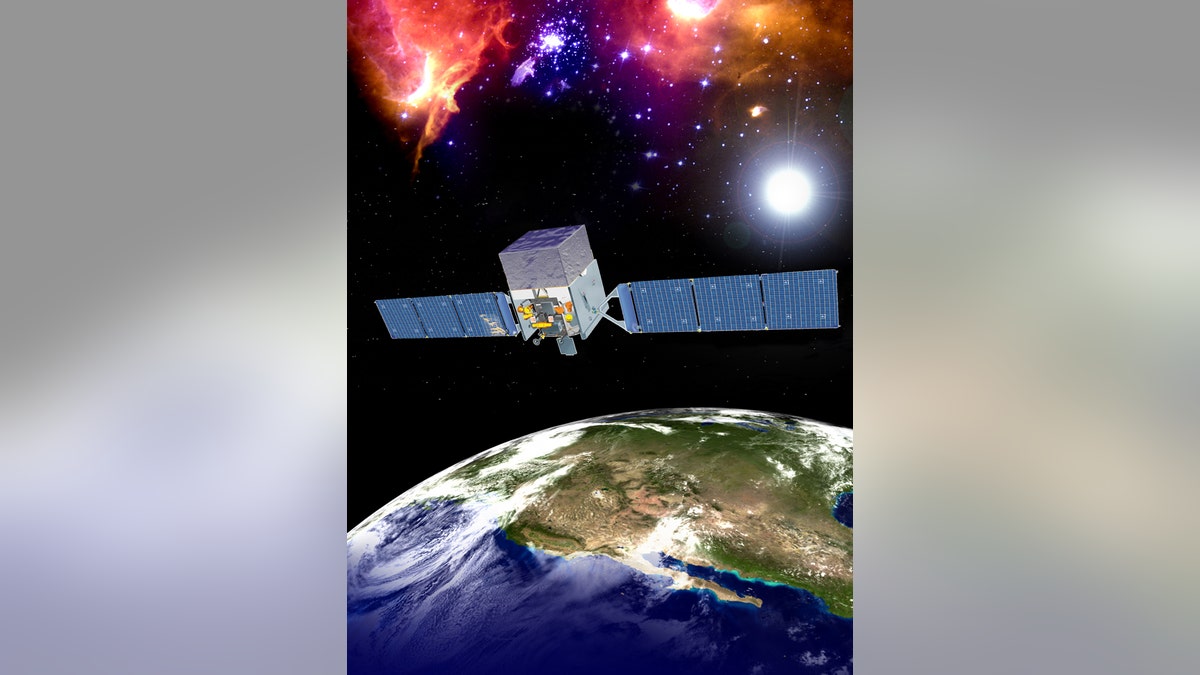
An artist's impression of the Fermi Gamma-Ray Space Telescope. (NASA/General Dynamics)
Happy birthday, Fermi Gamma-ray Space Telescope! NASA's most advanced gamma-ray observatory is celebrating 10 years of scientific discoveries this week.
The $690 million spacecraft launched from Florida's Cape Canaveral Air Force Station on June 11, 2008, on a mission to study gamma-rays , the highest-energy form of light in the universe. Gamma-rays are invisible to human eyes, but telescopes like Fermi allow astronomers to "see" this type of light, which contains clues about black holes, neutron stars and other mysterious sources of high-energy radiation.
"Fermi's first 10 years have produced numerous scientific discoveries that have revolutionized our understanding of the gamma-ray universe," Paul Hertz, director of NASA's Astrophysics Division, said in a statement. [ Gamma-Ray Universe: Photos by NASA's Fermi Space Telescope ]
By peering at the cosmos from low Earth orbit, Fermi detected the most powerful gamma-ray blast astronomers have ever seen: a mysterious source glowing with more energy than 9,000 supernovas. Fermi also discovered the first gamma-ray pulsar and gamma-ray "bubbles" around the Milky Way.
More From Space.com
The mission, formerly known as the Gamma-ray Large Area Space Telescope (GLAST), was named after the Italian-American physicist and Nobel laureate Enrico Fermi, who suggested in 1949 that cosmic rays (subatomic particles traveling close to the speed of light) may come from supernovas, or violent star explosions. The Fermi telescope found evidence confirming his theory by observing two supernova remnants in the Milky Way.
"Fermi has fundamentally improved our understanding of how the universe operates," David Thompson, a Fermi deputy project scientist at NASA's Goddard Space Flight Center in Greenbelt, Maryland, said in the statement . "This spacecraft has both provided evidence for long-cherished theories and has also forced the scientific community to reevaluate some of its assumptions."
After the observatory's initial five-year study, NASA opted to extend the Fermi telescope's mission for an additional five years . The telescope's extended mission is scheduled to end this fall.
Email Hanneke Weitering at hweitering@space.com or follow her @hannekescience . Follow us @Spacedotcom , Facebook and Google+ . Original article on Space.com .
